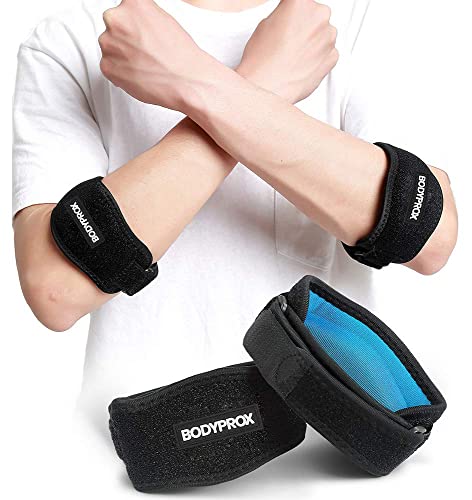Explore the advantages of using 5-pound wrist weights for enhanced muscle strength and better circulation. Learn proper fit, warm-up exercises, and safety tips to maximize your workout effectiveness.
Benefits
Muscle Strengthening
Think about your hands as delicate instruments that require regular maintenance to keep them in top condition. Just like a violin needs strings to produce its beautiful sounds, your wrists and forearms are essential for a wide range of everyday activities. Engaging in exercises that strengthen these areas can be akin to tuning up an instrument before a performance—preparing it for the tasks ahead with greater ease and effectiveness.
For instance, consider the grip strength required when lifting groceries or even typing on a keyboard. A strong grip not only makes these actions more comfortable but also helps prevent strain and injury in the long run. Weighted wrist curls, for example, can be like giving your hands a workout session to build up their stamina and resilience.
Improved Circulation
Imagine blood flow as the lifeblood that keeps your body vibrant and healthy—just as water is essential for a plant’s growth. Enhancing circulation through exercises can be likened to watering plants, ensuring they receive the nutrients necessary for flourishing. When you engage in activities that promote better blood flow, such as forearm rotations, it’s like opening the gates of a dam, allowing vital fluids and oxygen to reach every part of your body.
Improved circulation isn’t just about looking healthy; it also plays a crucial role in preventing conditions like deep vein thrombosis (DVT). By keeping your muscles active through exercises that involve the wrists and forearms, you’re essentially pumping life into your circulatory system. This improved flow can lead to enhanced energy levels, quicker recovery times from injuries, and even better skin health due to increased nutrient delivery.
In essence, incorporating these exercises into your routine is like investing in a well-maintained garden—regular care ensures that the plants (your body) remain robust and thriving.
Usage Tips
Proper Fit
Finding the right wrist brace or support can be like trying to find the perfect pair of shoes—comfort is key! Ensure that the brace you choose fits snugly around your wrist without feeling too tight. It should allow for some natural movement while still providing adequate support. Think about how different types of shoes fit; a good fit isn’t just about size, but also comfort and function.
Warm-Up Exercises
Before diving into any form of exercise or activity that involves your wrists, it’s essential to warm up properly. Just as you wouldn’t start running without stretching first, warming up your wrists can help prevent injuries and improve your performance. Simple exercises like rotating your forearms in both directions can get the blood flowing and prepare your muscles for action.
Consider starting with small circles—first clockwise, then counterclockwise—to gradually increase the range of motion. This is akin to how you might gently stretch a rubber band before using it; you want to ensure everything is ready and flexible.
By focusing on these usage tips, especially ensuring proper fit and engaging in warm-up exercises, you can enhance your experience and minimize any potential discomfort or injury.
Exercise Types
Weighted Wrist Curls
Weighted wrist curls are a fantastic way to target your forearm muscles. Imagine your forearms as a pair of springs; these exercises help them coil and uncoil with strength! By holding light weights in your hands, you can mimic the movement of lifting heavy objects—just like a baker kneading dough all day. As you perform this exercise, your muscles will adapt to handle more weight over time, much like how a plant grows stronger when faced with a little sunlight every day.
Forearm Rotations
Forearm rotations are another dynamic move that engages the muscles in both directions—circularly and back and forth. Think of them as the smooth rotation of gears; just as gears turn without breaking, your forearms should be able to handle this movement smoothly. This exercise is particularly effective for improving grip strength, which can come in handy when you’re holding a tool or trying to open a jar lid that seems especially stubborn. Like turning a key to unlock a door, these rotations unlock the full potential of your forearm muscles.
Safety Precautions
Avoid Skin Irritation
When using forearm strengthening equipment, it’s crucial to ensure your skin stays comfortable and irritation-free. Think of your skin like a delicate flower; just as you’d protect it from harsh chemicals, so too should you protect your skin when using any fitness gear. Always make sure the straps or bands are not too tight, allowing for proper circulation while still providing adequate support. Have you ever tried wearing gloves that were too small and rubbed against your skin? It can be quite uncomfortable, right? The same principle applies here—too tight can lead to discomfort and potential irritation.
Check Elasticity
Before starting any forearm strengthening exercises with your equipment, it’s essential to check the elasticity of the bands or straps. Imagine a rubber band that has been left in a drawer for too long—it might become brittle and break easily. Similarly, if the straps on your forearm trainer are not elastic enough, they may offer insufficient resistance, leading to ineffective workouts. Conversely, overly stretchy bands can snap, causing both inconvenience and potential injury. Regularly inspecting these components ensures that you’re using equipment in its optimal condition, ensuring a safe and effective workout experience.
By following these safety precautions—especially avoiding skin irritation and checking the elasticity of your forearm trainer—you can ensure a more enjoyable and effective exercise routine.


